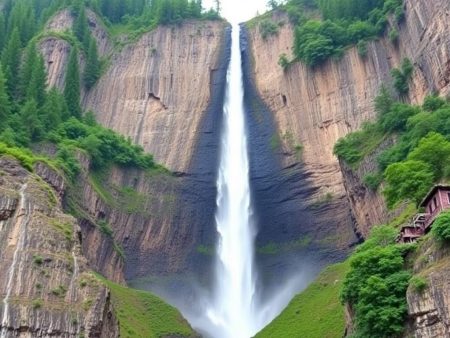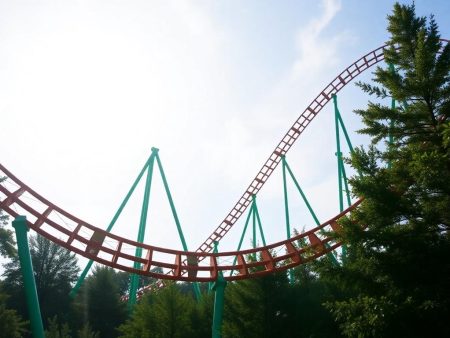Baseball has always been a game of remarkable athletes, each bringing unique skills and physical traits to the field. Among these players, some stand out not just for their talent but for their towering presence. Height isn’t the first thing that comes to mind when thinking about baseball, but the tallest players in MLB history have certainly left a lasting impression.
These giants of the game don
Tallest MLB Player in History: How Height Impacts Baseball Performance
Baseball has always been a game of remarkable athletes, each bringing unique skills and physical traits to the field. Among these players, some stand out not just for their talent but for their towering presence. Height isn’t the first thing that comes to mind when thinking about baseball, but the tallest players in MLB history have certainly left a lasting impression.
Convert the height of the tallest people, buildings, mountains and monuments to m, feet and inches to compare
0' 0" is equal to 0.0 cm or 0.00 m.
These giants of the game don’t just dominate the mound or the plate—they redefine what it means to play America’s pastime. From intimidating pitchers to powerful hitters, their height often gives them an edge that can’t be ignored. But who holds the title of the tallest MLB player? Let’s take a closer look at the athletes who have literally stood head and shoulders above the rest.
Who Is The Tallest MLB Player?
Jon Rauch holds the title of the tallest MLB player, standing at 6 feet 11 inches (211 cm). Rauch, a right-handed pitcher, played for several teams, including the Minnesota Twins and Washington Nationals, during his career from 2002 to 2013. His height not only gave him a commanding presence on the mound but also an advantage in delivering pitches from an elevated release point.
Other tall MLB players include Randy Johnson at 6 feet 10 inches (208 cm) and Chris Young, another pitcher, also at 6 feet 10 inches. While they didn’t surpass Rauch’s height, their towering statures contributed significantly to their dominant performances on the field.
Physical Advantages Of The Tallest MLB Player
Height in baseball offers a combination of mechanical leverage and broader reach, creating unique physical advantages. Tall MLB players often utilize their stature to enhance both pitching and batting performances.
Impact On Pitching
Tall pitchers like Jon Rauch gain an elevated release point, making it harder for batters to read pitches. For example, Rauch’s 6 feet 11 inches frame allowed pitches to appear as if released closer to the plate, reducing batter reaction time. This height advantage also generates natural downward momentum, creating a sharper angle on breaking balls.
In addition, taller pitchers can achieve longer strides to the plate, maximizing velocity and minimizing distance between the mound and the batter. Randy Johnson, at 6 feet 10 inches, leveraged his height to achieve similar results, becoming one of MLB’s most feared pitchers.
Impact On Batting
Tall batters benefit from a larger strike zone, which helps in forcing pitchers to adjust their placements. Players like Chris Young, standing at 6 feet 10 inches, used their height to cover more areas of the plate and capitalize on pitches lower in the zone.
Extended reach gives taller batters improved plate coverage, allowing them to connect with balls that average-sized players might miss. This advantage often translates to increased power potential due to longer arm swings, resulting in more home runs and deep hits.
Notable Historical Tallest MLB Players
Height has been a defining factor for some of the most recognizable athletes in MLB history. Several players, past and present, have stood out not just for their abilities but also for their exceptional stature.
Past Record-Holders
Jon Rauch remains the undisputed tallest player in MLB history, standing at 6 feet 11 inches (211 cm). As a right-handed pitcher, his career spanned over a decade, with significant contributions to teams like the Minnesota Twins and Washington Nationals. His towering presence allowed for a highly elevated release point, making his pitches difficult for opponents to track.
Before Rauch, pitchers like Randy Johnson and Eric Hillman garnered attention for their height. Johnson, nicknamed “The Big Unit,” measured 6 feet 10 inches (208 cm) and was a dominant force in the league, earning five Cy Young Awards and over 4,800 career strikeouts. Hillman, also 6 feet 10 inches (208 cm), pitched for the New York Mets in the early 1990s and used his height to create unique pitching angles, though his career was shorter.
Current Tallest Players In The League
Sean Hjelle, standing at 6 feet 11 inches (211 cm), shares the title of tallest MLB player with Jon Rauch. As a pitcher for the San Francisco Giants, Hjelle utilizes his extraordinary height to deliver pitches from a steep downward angle, proving effective in intimidating batters.
Other notable tall active players include Tyler Glasnow and Aaron Slegers, both standing at 6 feet 8 inches (203 cm). Glasnow, a starting pitcher for the Tampa Bay Rays, combines his height with elite velocity and pitch movement, solidifying his role as a key asset. Slegers, a 6-foot-10-inch reliever, has played for teams like the Los Angeles Angels, leveraging his massive frame for groundball-inducing pitches. These giants of the field continue to demonstrate how height remains a critical asset in Major League Baseball.
Challenges Faced By The Tallest MLB Players
The tallest MLB players often encounter unique challenges on and off the field despite their physical advantages. These difficulties can impact their performance, career longevity, and overall athletic capabilities.
Movement And Flexibility
Tall players frequently struggle with movement and flexibility during games. Their larger frames require more coordination, making quick reactions and precise control tougher to achieve. For example, pitchers like Jon Rauch and Sean Hjelle must maintain consistent mechanics to avoid delivery errors caused by the extra length of their arms and legs. The natural biomechanics of taller athletes can also lead to delayed adjustments to ground balls or pitches, which may affect fielding and accuracy. Flexibility issues, if unmanaged, can limit their ability to maintain peak athletic performance throughout a season.
Injuries And Longevity
Height significantly increases the likelihood of stress-related injuries. Pitchers such as Randy Johnson and Chris Young faced recurring back, shoulder, and knee issues due to the strain their towering statures placed on their joints. Taller players experience excessive pressure on their lower body, particularly in high-impact movements like pitching and running. These injuries often demand longer recovery periods, impacting career longevity. The physical strain, combined with the challenge of maintaining conditioning, makes adapting to extended seasons particularly taxing for these athletes.
How Height Influences Performance In Baseball
Height impacts multiple facets of a baseball player’s performance, particularly in pitching, batting, and fielding. Tall players harness their physical stature to gain advantages but also face unique challenges.
Tall pitchers can release the ball closer to home plate due to their extended arm reach, reducing a batter’s reaction time. Players like Jon Rauch and Randy Johnson capitalized on this by delivering fast pitches with elevated release points, making their throws harder to predict. Their height also contributed to creating sharp angles for breaking balls, disrupting batters’ timing.
Batting benefits from height through increased plate coverage and a larger strike zone. This creates opportunities for powerful swings and higher contact rates. Chris Young, standing at 6 feet 10 inches (208 cm), exemplified how taller players use their reach for extended hitting power, often translating into more home runs and extra-base hits.
In the outfield, height aids in catching high fly balls and extending the range of defensive plays. Taller players can make leaping grabs over the outfield wall, which shorter players might miss. Aaron Judge, at 6 feet 7 inches (201 cm), demonstrates this defensive advantage regularly with his exceptional fielding range.
Despite these benefits, height brings specific challenges. Coordinating longer limbs requires precise mechanics, making control more difficult, especially for pitchers. This complexity can lead to errors and inefficiency during games. Furthermore, stress-related injuries affect taller players more frequently, impacting their overall performance and career durability. Maintaining form and minimizing injury risk are crucial for these athletes to perform consistently.
Conclusion
Height has always been a fascinating factor in Major League Baseball, offering both unique advantages and distinct challenges. The tallest players leave an undeniable mark on the game, using their stature to influence pitching, batting, and fielding in ways that set them apart.
While their height can provide a competitive edge, it also demands careful management to overcome physical limitations and injury risks. These towering athletes continue to captivate fans, proving that baseball is a sport where diverse physiques can thrive and excel. Their presence on the field is a testament to the incredible range of talent the game embraces.
Frequently Asked Questions
Who is the tallest MLB player in history?
Jon Rauch and Sean Hjelle are tied as the tallest MLB players in history, both standing at 6 feet 11 inches (211 cm). Rauch played as a pitcher from 2002 to 2013, and Hjelle currently plays for the San Francisco Giants.
How does height provide an advantage for MLB pitchers?
Height gives pitchers an elevated release point, making it harder for batters to anticipate pitches. Taller pitchers also generate greater velocity and sharper breaking balls due to their longer arms and larger stride toward the plate.
What challenges do taller MLB players face?
Taller players often struggle with coordination, movement, and flexibility, which can impact their precision and reaction times. They’re also more prone to stress-related injuries like back, shoulder, and knee issues, which can affect career longevity.
How does height benefit MLB batters?
Height provides batters with a larger strike zone and improved plate coverage, allowing for powerful swings. This can lead to better home run potential and leverage during at-bats.
Are there any tall active MLB players besides Sean Hjelle?
Yes, players like Tyler Glasnow and Aaron Slegers, both standing at 6 feet 8 inches (203 cm), are among the tallest active MLB athletes today.
What notable tall MLB players have earned significant accolades?
Randy Johnson, standing at 6 feet 10 inches (208 cm), gained fame with five Cy Young Awards and stellar pitching accomplishments. His height played a key role in his dominance on the mound.
Does height help in fielding for MLB players?
Yes, taller players have an advantage in reaching high fly balls and extending their defensive range. For example, Aaron Judge’s height aids significantly in outfield performance and catching challenging balls.
What defines Jon Rauch’s MLB career?
Jon Rauch’s 6 feet 11-inch frame gave him a commanding presence as a right-handed pitcher. He played for teams like the Minnesota Twins and Washington Nationals and used his height to master his elevated pitch delivery.
How does height influence player mechanics in baseball?
Taller players must carefully maintain consistent mechanics, especially pitchers, as longer limbs can lead to delivery errors. Sustained form minimizes coordination issues and boosts performance.
Does being tall increase injury risk for MLB players?
Yes, taller players are more prone to stress-related injuries, including back, shoulder, and knee issues. These injuries often require longer recovery times, impacting their ability to play consistently.





